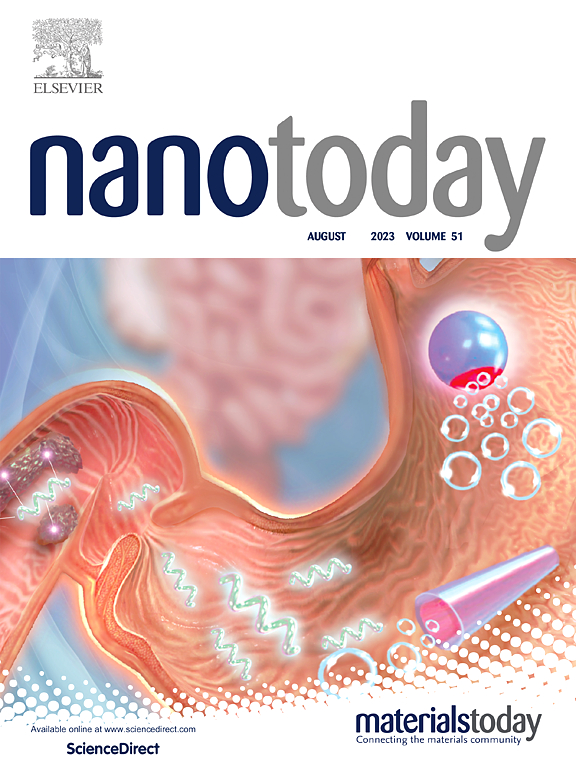Single-molecule light-scattering imaging for in situ counting circular RNA
IF 10.9
1区 材料科学
Q1 CHEMISTRY, MULTIDISCIPLINARY
引用次数: 0
Abstract
The detection of circular RNA (circRNA) at the single-molecule level is essential for the elucidation of circRNA-mediated signaling pathways and its association with disease. Although many fluorescence-based methods have been used for the in situ imaging of circRNA, the inherent defects of fluorescent dyes, including high background signal and photobleaching, preclude sensitivity to the single-molecule level. Herein, leveraging the microRNA sponge feature of circRNA and the strong light-scattering signals of gold nanoparticles (AuNPs), we develop a circRNA-induced assembling of plasmon-coupled spherical nucleic acids (SNAs) strategy for in situ light-scattering imaging and counting of circRNA at the single-molecule level. The SNAs were constructed by modifying sponge probes on AuNPs, which were small and initially invisible. The microRNA sponge nature of circRNA led to the assembly of SNAs to form AuNP aggregates with enhanced light-scattering signals, which could be visualized as diffraction-limited spots irrespective of the interference signals produced by the intracellular environment. This method enabled the accurate quantification of the circRNA by counting the number of spots from a zero background, facilitating the in situ imaging and counting of individual circRNAs at the single-molecule level.
单分子光散射成像原位计数环状RNA
单分子水平的环状 RNA(circRNA)检测对于阐明 circRNA 介导的信号通路及其与疾病的关系至关重要。虽然许多基于荧光的方法已被用于 circRNA 的原位成像,但荧光染料的固有缺陷,包括高背景信号和光漂白,使其无法达到单分子水平的灵敏度。在此,我们利用 circRNA 的 microRNA 海绵特性和金纳米粒子(AuNPs)的强光散射信号,开发了一种 circRNA 诱导的等离子体耦合球形核酸(SNAs)组装策略,用于在单分子水平对 circRNA 进行原位光散射成像和计数。SNAs 是通过修改 AuNPs 上的海绵探针构建的,这些探针很小,最初是不可见的。circRNA 的微小核糖核酸海绵性质导致 SNAs 组装成具有增强光散射信号的 AuNP 聚合体,这些聚合体可作为衍射限制的光点进行可视化,而不受细胞内环境产生的干扰信号的影响。通过这种方法,可以从零背景开始计算光点数量,从而准确量化 circRNA,促进了单个 circRNA 在单分子水平上的原位成像和计数。
本文章由计算机程序翻译,如有差异,请以英文原文为准。
求助全文
约1分钟内获得全文
求助全文
来源期刊

Nano Today
工程技术-材料科学:综合
CiteScore
21.50
自引率
3.40%
发文量
305
审稿时长
40 days
期刊介绍:
Nano Today is a journal dedicated to publishing influential and innovative work in the field of nanoscience and technology. It covers a wide range of subject areas including biomaterials, materials chemistry, materials science, chemistry, bioengineering, biochemistry, genetics and molecular biology, engineering, and nanotechnology. The journal considers articles that inform readers about the latest research, breakthroughs, and topical issues in these fields. It provides comprehensive coverage through a mixture of peer-reviewed articles, research news, and information on key developments. Nano Today is abstracted and indexed in Science Citation Index, Ei Compendex, Embase, Scopus, and INSPEC.
 求助内容:
求助内容: 应助结果提醒方式:
应助结果提醒方式:


